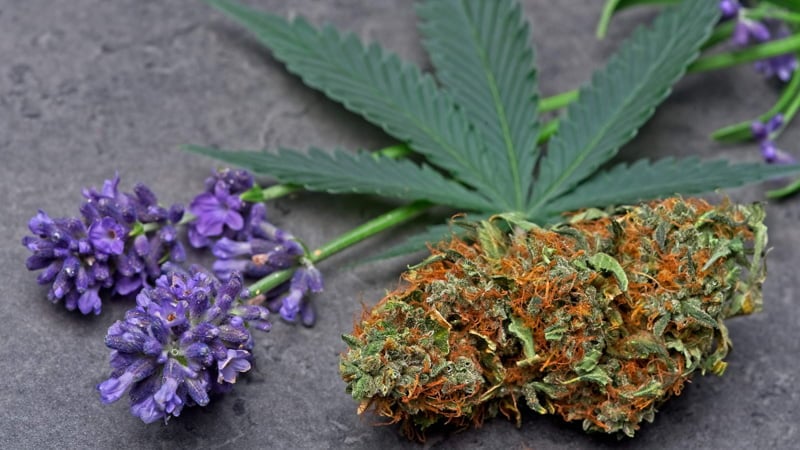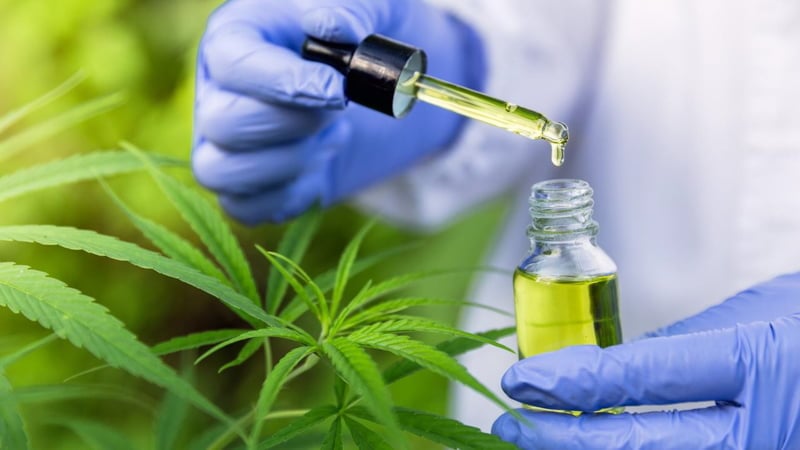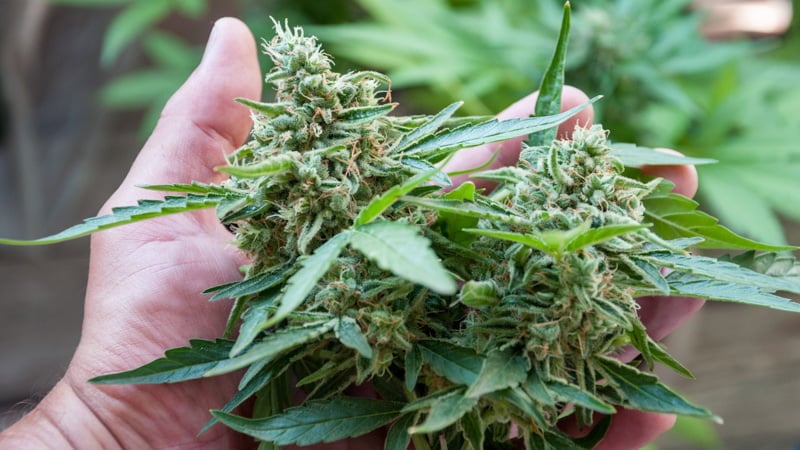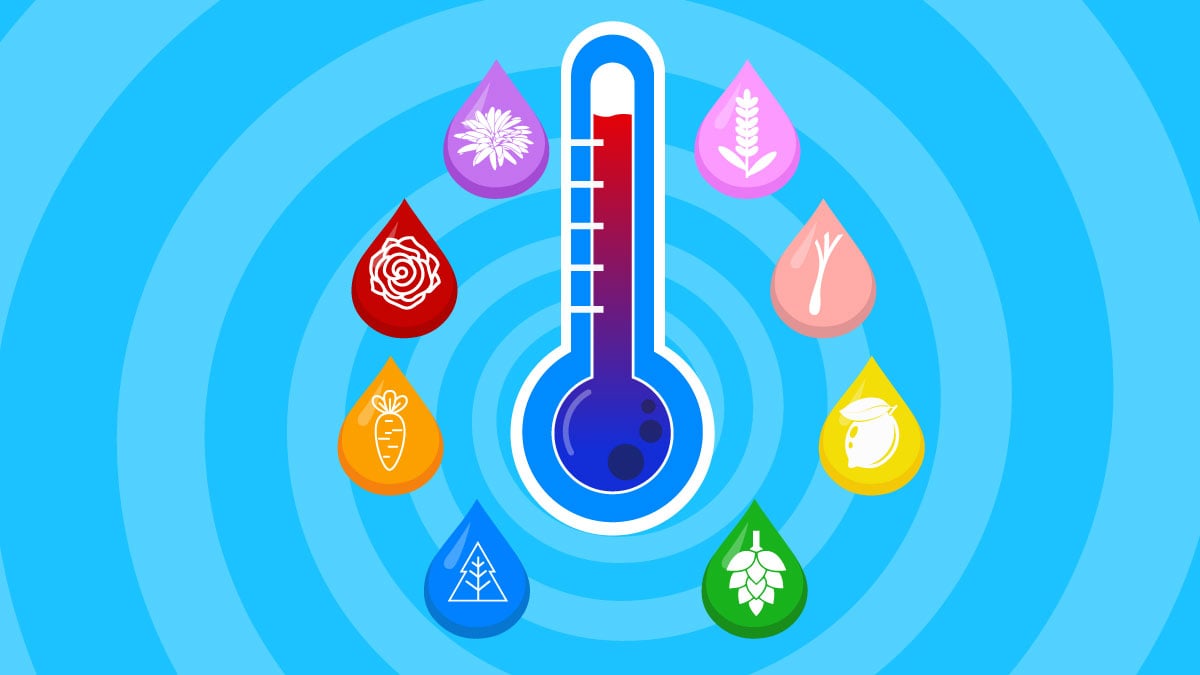Do Terpenes Get You High?
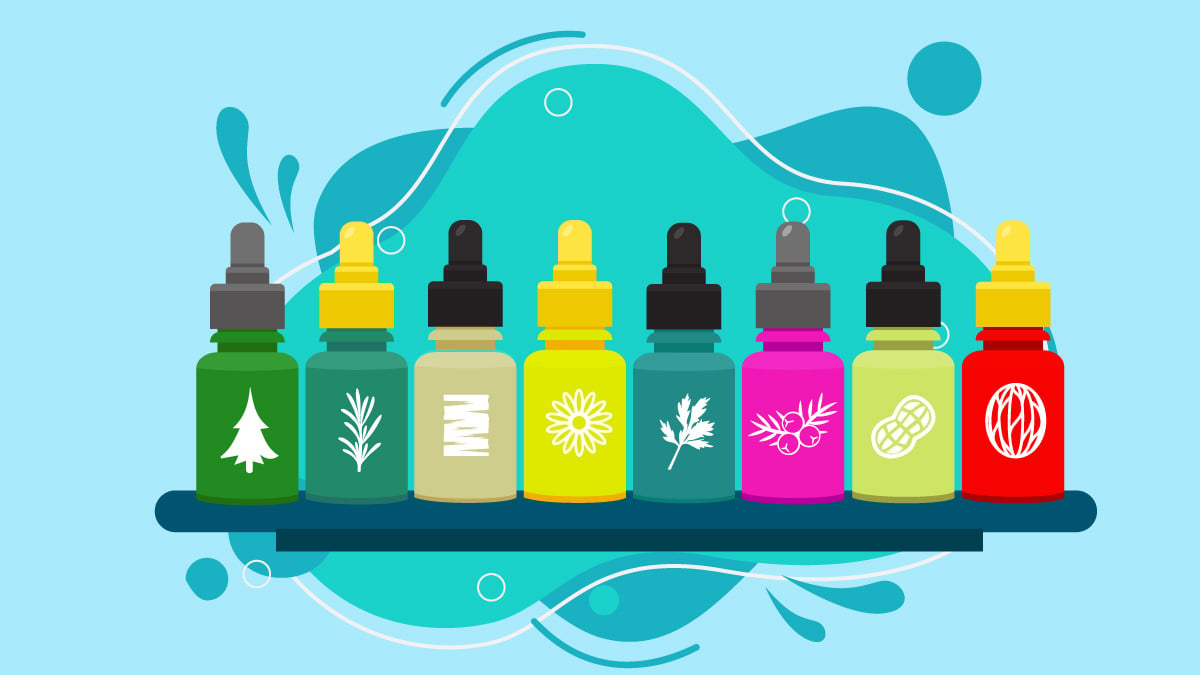
Not everything in the world that’s associated with marijuana and its constituents will help you get ganja-faced.
Do terpenes get you high?
The simple answer is, “no.”
If that sounds disappointing, despair not, my cloud-enshrouded friend — because there are some terpenes that can make your cannabis stronger despite not being psychoactive themselves.
Are Terpenes Psychoactive?
Technically speaking, there are some psychoactive terpenes, but none of them are produced in the cannabis plant.
A terpene known as salvinorin A from Salvia divinorum as well as myristicin from nutmeg is extremely psychedelic. But it’s not quite that simple. Both of these terpenes, when tested alone, don’t produce much psychoactive effect. Only when they’re in the presence of other phytochemicals, do they produce their psychedelic effects.
There are no terpenes from the cannabis plant that are psychoactive in the traditional sense, which means that you can’t take them to get high.
However, if we get creative with what the word “high” means, you could make an argument that terpenes are at least mildly psychoactive.
For example, the terpene geraniol has been shown to cause a sudden rush of endorphins — which for a split second, makes users feel high.
Other terpenes, such as caryophyllene and myrcene, are mildly sedative. Some people find these terpenes can give them a bit of a body buzz similar to CBD.
Most terpenes will, at the very least, boost the effects of cannabinoids, which one could argue makes them indirectly psychoactive.
How Do Terpenes Work?
Little do most people know, we’ve been experiencing terpenes all our lives. From the fragrance of lilacs and pine trees to fruits and even beer, we have interacted with these chemical compounds since the dawn of time.
More recently, terpenes have been isolated into essential oils and put to various uses.
If you’ve used a pine-scented furniture polish, a citrus cleaner, or colognes and perfumes, you probably experienced them to varying degrees. Even some insects and animals produce terpenes to defend themselves from predators or attract partners.
Aromatherapy has made direct use of terpenes, although the jury is still out on the validity of the claims. Regardless, fragrances often make us happy or calm just from how we associate them in our lives. For instance, if you remember the smell of oranges and walnuts during happy holidays as a child, you will welcome these fragrances and have some very happy, vibrant memories.
Discovery.com explains it the best: “Scents bypass the thalamus and go straight to the brain’s smell center, known as the olfactory bulb. The olfactory bulb is directly connected to the amygdala and hippocampus, which might explain why the smell of something can so immediately trigger a detailed memory or even intense emotion.”
Can Terpenes Alter a Cannabis High?
To understand this, we have to know how a “high” works. Once you take cannabis into your body, it moves through your circulatory system into the brain. The method has nothing to do with how it works. The THC changes the chemistry in your brain and alters your perception of reality.
We also have to understand the difference between cannabinoids and terpenes. There’s no THC or CBD in terpene. The terpenes are simply additional compounds made by the plant that go along for the ride.
With that said, some terpenes may change the way THC affects your brain.
They may be able to enhance or reduce some of the effects one might call a “high” and even mitigate some of the negative experiences of THC.
For example, people who experience paranoia or anxiety when using THC may find terpenes such as bisabolol could help reduce that feeling. This could be why some cannabis strains are more likely to cause anxiety than others despite having similar cannabinoid profiles.
How terpenes may alter the effects of cannabinoids:
- Terpenes may boost the absorption of cannabinoids
- Terpenes may enhance the ability of cannabinoids to bind to ECS receptors
- Terpenes may slow the metabolism of cannabinoids
- Terpenes may provide similar effects as cannabinoids through separate mechanisms
- Terpenes may counteract the side effects of cannabinoids
Terpenes & the Entourage Effect
Basically, the entourage effect is the cooperation between all the compounds in a cannabis plant.
Consumers buy certain strains for the handshake between terpenes, cannabinoids, THC, and other chemicals. This handshake agreement is what gives certain strains of cannabis their characteristic effects.
The entourage effect is a large part of why you either can’t get off the couch or have a burning desire to buy oil paints. The entourage effect does not happen in a vacuum; it occurs in the presence of varying amounts of phytochemicals that work together in combination with your own mental state and mood.
Think about it like getting dressed. If you’re the boss, you might wear a suit, but the accessories help to define the message. A Rolex, a Coach bag, Prada shoes all scream, “I’ve got a ton of money, obey me!” whether everything matches or not. Compare the same suit with a Citizen watch, a handbag from TJ Maxx, and a sensible pair of Steve Madden shoes. You seem friendlier and more accessible.
So if your weed is high in linalool and myrcene, just take the remote to the couch with you, so you don’t have to get up again for a while. On the other hand, if you need some creative energy, you might prefer strains with ocimene, limonene, and pinene.
Common Cannabis Terpenes
So if you wanted to add terpenes to a delta 8 tincture, for instance, what would you choose?
That depends on what you want to add or subtract from your high. Let’s look at a few terpenes before you go spending your week’s pay on an experiment.
1. Myrcene
The terpene thought to be partly responsible for couch lock is myrcene. Not only do you find this in indica strains of marijuana, but it’s also in abundance in hops which makes it a big part of your beer flavor profile. In addition, some studies have revealed myrcene may have a sedative effect [1].
Some people find myrcene-rich cannabis products enhance the body high.
Learn More: Myrcene Terpene: Strains, Effects, & More
2. Humulene
Humulene is also found in hops, as well as sage, ginseng, and many other plants. This spicy, earthy terpene is not as prevalent as myrcene in the cannabis plant but still contributes to flavors and aromas.
The hops plant is called Humulus lupulus because of the high amount of humulene in it.
What’s interesting is the effects of humulene on the body as it has the ability to spread through the body quickly, as well as its tendency to reduce the appetite increase caused by some strains of cannabis.
High humulene concentrations can cause users to drift off to sleep, where they experience more vivid dreams.
3. Limonene
If you like the smell of oranges and limes, you’ll love limonene. It’s a very popular additive to cleaning products and makes an area smell fresh and clean. But instead of considering it for a gut cleanse, you might add it to your THC for its renown in reducing appetite. This way, you can get your lovely little high and not eat every carb in the house.
Limonene is not psychoactive, but it has an undeniable uplifting quality to it that can make users feel euphoric for a few moments.
4. Linalool
Linalool (pronounced LIN-UH-LAWL) is abundant in plants like lavender. It’s powerfully relaxing, with an almost lucid quality to it.
In Big Sur and the Oranges of Hieronymus Bosch, playwright Henry Miller wrote, “Better keep the young on lemons and lavender until they’ve reached the age of discretion.”
5. Pinene
One of the most prevalent and researched terpenes, this bright fragrance is popular with perfumers, chefs, and cannabis enthusiasts alike.
The pinene terpene is not overtly psychoactive, but strains high in this terpene just seem to hit a little bit differently.
In addition, those who experience THC-induced anxiety might find this terpene helps. And, it just freakin’ smells great!
6. Geraniol
Another floral terpene, geraniol, is derived from the geranium plant and has a fragrance profile reminiscent of fruit and roses.
Chances are you eat a lot of it: it’s also found in blueberries, peaches, carrots, blackberries, and many other garden fruits and vegetables.
Oddly, honey bees also generate it to mark good sources for foraging and deter other bees from their territory. Those who don’t like a “downer” feel when they use cannabis might like the mood lift of geraniol.
Some people find geraniol and related rose terpenes have a euphoric quality to them.
7. Ocimene
This is another great-smelling terpene, very much like the deep woods, and you probably eat a fair amount of this one, too. Pepper, basil, mangoes, and hops all contain ocimene.
This terpene has an energizing quality to it that makes it feel as though it could be psychoactive (but it’s not really). Cannabis strains high in ocimene tend to be associated with promoting creativity and out-of-the-box thinking.
If you like a little energy with your cannabis, ocimene is the terpene for you.
8. Caryophyllene
This terpene is a heavy lifter and offers support for people who experience anxiety with their THC. In addition, strains that users buy for pain control or sleep often contain caryophyllene terpene.
9. Terpinolene
Terpinolene is a piney terpene found in conifers, rosemary, sage, lilacs, apples, and a host of spices. It’s great for sleep support, being a slightly relaxing fragrance.
Cannabis Strains & Their Terpenes
Although some people like to add terpenes to their cannabinoids, others prefer to get special effects from different strains.
Here are some popular strains with their terpene profiles:
1. Blue Dream
This popular strain is an insomniac’s…well…dream. This pleasant strain has a high level of myrcene, which pairs well with THC for relaxation. It also has humulene, pinene, and caryophyllene.
2. Dutch Treat
No, it doesn’t mean you and Jay are paying for your own food. Dutch treat has a strong terpinolene profile. It also contains some ocimene as well as a bit of limonene and caryophyllene.
3. Pineapple
If you’d rather have a pick-me-up instead of a put-me-down, pineapple might become a fast fave. People like it for its tropical fragrance and its mood-elevating terpenes.
4. Zkittlez
Humulene and caryophyllene are prevalent in this strain, but linalool is the star player here. Indica-dominant, Zkittlez is prized for its soothing properties and relaxing fragrances.
5. Sour Diesel
This happy little sativa strain has lots of caryophyllene and limonene, followed by humulene and other terpenes in much smaller amounts. Users report calm creativity with good focus.
Can I Add Terpenes to My Products To Make Them Stronger?
The short answer is yes. The longer answer is yes, but be careful. You want terpenes that are high quality and don’t contain any synthetic ingredients. You’ll also want to make sure you’re diluting your tinctures to a safe level before you use them.
The general rule of thumb is to ensure terpenes never exceed 5% in products you intend to ingest.
Depending on the product, you will need to know the weights and measures of your product and do some research on how to add the isolate so you don’t hurt yourself. More isn’t always more.
When you research terpenes to add to your cannabis products, make sure you understand all the possible side effects of boosting the compound in your smoke, vape, edibles, or beverage. For example, some terpenes have different results if ingested than if they are inhaled.
Key Takeaways: Will Terpenes Contribute to a Cannabis High?
Yes, terpenes will contribute to a cannabis high, but they will not get you high by themselves. Cannabis will get you high by itself but always contains some terpenes.
Understand that THC, CBD, and terpenes are all very different compounds. Still, they work together (along with other phytochemicals) to produce what’s called the entourage effect.
Without this effect, all you get is high. With the terpenes and other phytochemicals, you get friends with benefits.
